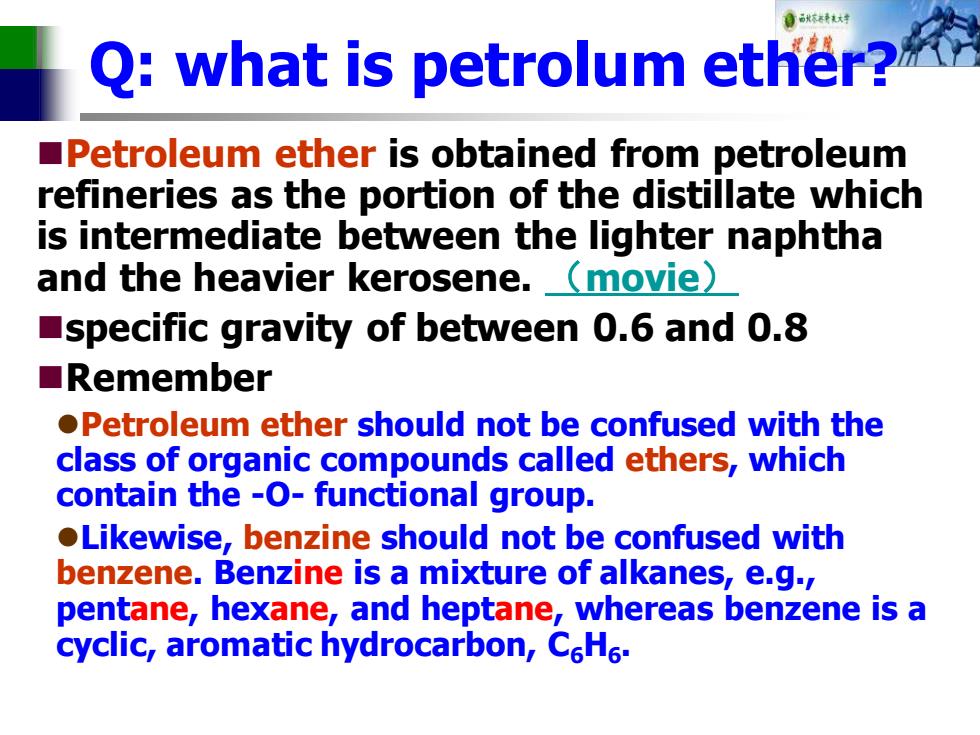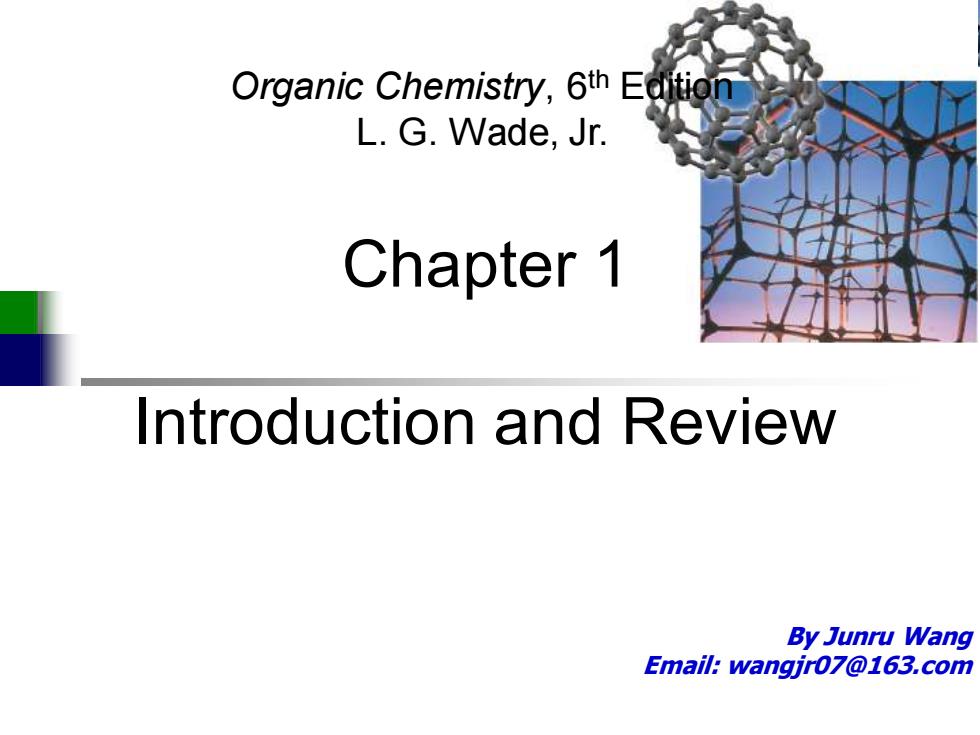
what is petrolum ether? Ethers Alkanes?Alkenes? ●石油醚是哪类化合物?瞇?烷烃?烯烃? A volatile fraction of petroleum consisting chiefly of pentanes and hexanes. The term "petroleum ether"is an old term used to refer to a mixture of hydrocarbons with a specific boiling point range.In other words, there is no ether in petroleum ether! Synonyms for petrolem ether include onaphtha,petroleum benzin,benzin,ligroin,white spirit,and the lab slang,"pet ether
Q: what is petrolum ether? ◼Ethers ? Alkanes? Alkenes? ⚫石油醚是哪类化合物? 醚? 烷烃? 烯烃? ◼A volatile fraction of petroleum consisting chiefly of pentanes and hexanes. ◼The term "petroleum ether" is an old term used to refer to a mixture of hydrocarbons with a specific boiling point range. In other words, there is no ether in petroleum ether! ◼Synonyms for petrolem ether include ⚫naphtha, petroleum benzin, benzin, ligroin, white spirit, and the lab slang, "pet ether

合司秋环体转大对 Q:what is petrolum ether? Petroleum ether is obtained from petroleum refineries as the portion of the distillate which is intermediate between the lighter naphtha and the heavier kerosene._(movie) specific gravity of between 0.6 and 0.8 ■Remember .Petroleum ether should not be confused with the class of organic compounds called ethers,which contain the-O-functional group. Likewise,benzine should not be confused with benzene.Benzine is a mixture of alkanes,e.g., pentane,hexane,and heptane,whereas benzene is a cyclic,aromatic hydrocarbon,C6H6
Q: what is petrolum ether? ◼Petroleum ether is obtained from petroleum refineries as the portion of the distillate which is intermediate between the lighter naphtha and the heavier kerosene. (movie) ◼specific gravity of between 0.6 and 0.8 ◼Remember ⚫Petroleum ether should not be confused with the class of organic compounds called ethers, which contain the -O- functional group. ⚫Likewise, benzine should not be confused with benzene. Benzine is a mixture of alkanes, e.g., pentane, hexane, and heptane, whereas benzene is a cyclic, aromatic hydrocarbon, C6H6

Study Tips提示 Read the assigned textbook chapter before class. Write out the main notes and focus on what covered in class. Spend at least two to three hours studying out of class for every time spent in class. .This is a very minimal amount of time to spend on a course of this type.You will be rewarded for your efforts.Remember that you are competing with other students.Students that fail usually do so because they're too busy not because they're dumb or lazy. Be an active learner .Form a study group and be an active learner.Don't just memorize,but integrate the information into your existing knowledge base and emphasize understanding. ■提前预习/做课堂笔记/课后做一定量的题/勤思考,多交流,及 时整理 "Chance favors the prepared mind. ■答疑时间: ----Louis Pasteur
Study Tips 提示 ◼Read the assigned textbook chapter before class. ◼Write out the main notes and focus on what covered in class. ◼Spend at least two to three hours studying out of class for every time spent in class. ⚫This is a very minimal amount of time to spend on a course of this type. You will be rewarded for your efforts. Remember that you are competing with other students. Students that fail usually do so because they're too busy not because they're dumb or lazy. ◼Be an active learner ⚫Form a study group and be an active learner. Don't just memorize, but integrate the information into your existing knowledge base and emphasize understanding. ◼提前预习/做课堂笔记/课后做一定量的题/勤思考,多交流,及 时整理 ◼答疑时间: “Chance favors the prepared mind.” ----Louis Pasteur

Organic Chemistry,6th Edition L.G.Wade,Jr. Chapter 1 Introduction and Review By Junru Wang Email:wangjr07@163.com
By Junru Wang Email: wangjr07@163.com Chapter 1 Introduction and Review Organic Chemistry, 6th Edition L. G. Wade, Jr

自秋转对 Key Notes 教华税 ■Definitions ■Atomic Structure Electronic Structure .Electronic Configurations ●Bond Formation ●Covalent Bonds ■Lewis Structures ■Resonance ■Acids and Bases Arrhenius Acids and Bases BrOnsted-Lowry Acids and Bases ●Lewis Acids and Bases
Key Notes ◼Definitions ◼Atomic Structure ⚫Electronic Structure ⚫Electronic Configurations ⚫Bond Formation ⚫Covalent Bonds ◼Lewis Structures ◼Resonance ◼Acids and Bases ⚫Arrhenius Acids and Bases ⚫BrØ nsted-Lowry Acids and Bases ⚫Lewis Acids and Bases